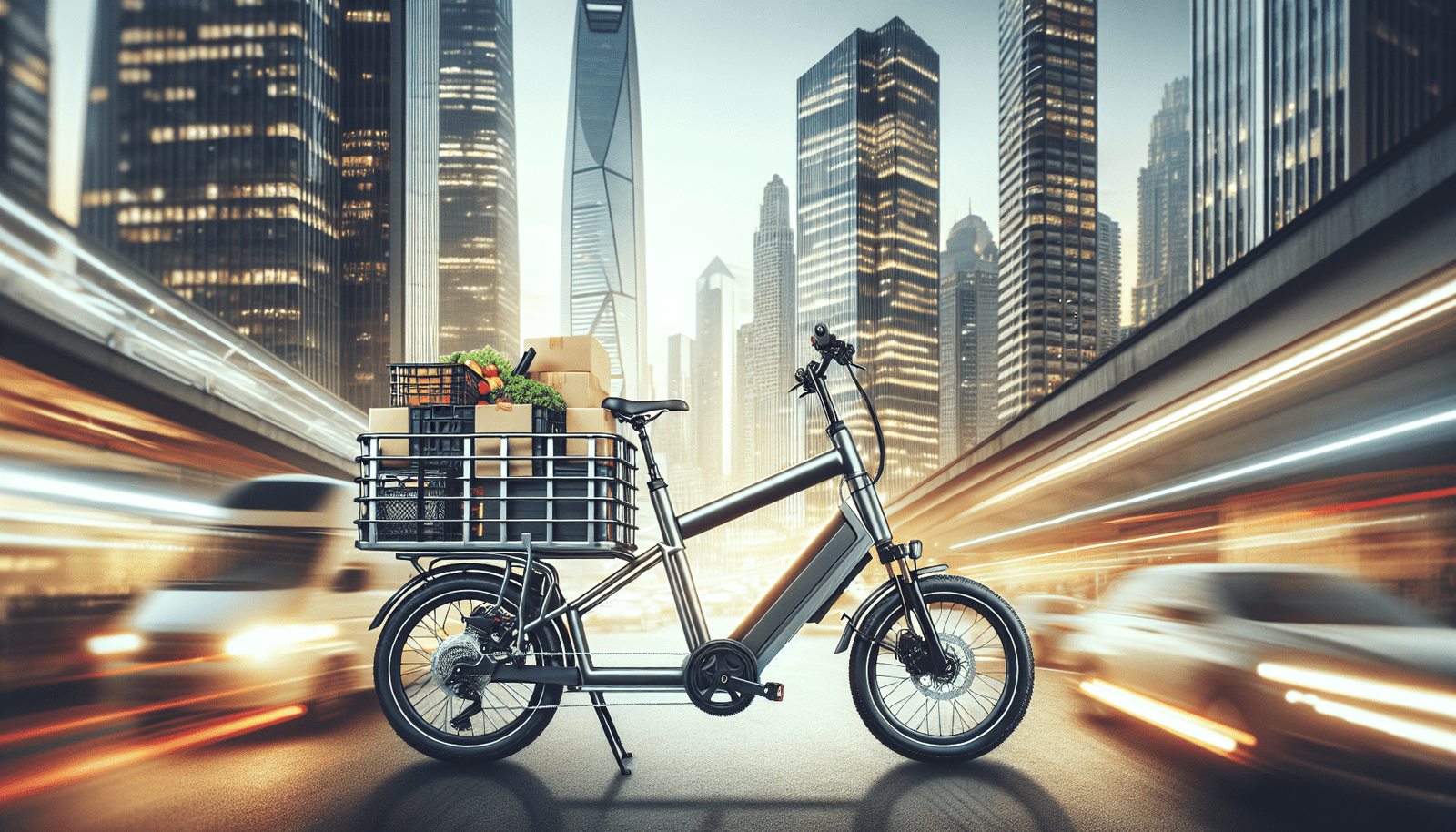When it comes to cargo-carrying electric bikes, you’ve got a lot of potential at your fingertips. These modern marvels can haul impressive loads, making your daily commute or errands a breeze. However, it’s important to note that there are indeed weight limitations based on the design specs and build quality of each bike. Typically, cargo e-bikes can carry loads between 300 to 550 pounds, but always check the manufacturer’s guidelines to ensure you’re not exceeding the recommended weight, which could affect performance and safety. So, whether you’re transporting groceries, gear, or kids, being mindful of these limits will help you enjoy a smooth, efficient ride every time. Have you ever wondered if there are any limitations on the weight a cargo-carrying electric bike can handle? You’re not alone! With the increasing popularity of electric bikes, especially the cargo-carrying variety, it’s a question many enthusiasts and potential buyers find themselves asking. Let’s dive in and explore the capacities, capabilities, and considerations of these versatile two-wheeled wonders.
What is a Cargo-carrying Electric Bike?
Cargo-carrying electric bikes, often referred to as cargo e-bikes, are designed to handle heavy loads while providing assistance through an electric motor. These bikes are typically equipped with sturdy frames, reinforced tires, and powerful motors to ensure a smooth ride even when fully loaded.
Types of Cargo-carrying Electric Bikes
There are several types of cargo e-bikes, each built for different needs. Here’s a quick look at the main categories:
| Type | Description |
|---|---|
| Longtail Cargo Bikes | These have extended rear ends to accommodate extra seats, cargo boxes, or panniers. |
| Front-loading Cargo | Also known as “bakfiets,” these bikes have a large front cargo area, usually a box or platform, for heavy loads. |
| Compact Cargo | Smaller than other cargo bikes, these are designed for urban transport but can still carry significant weight. |
These variations ensure that no matter your need, there’s likely an electric cargo bike suited to your purposes.
Understanding Weight Limitations
Weight limitations for cargo-carrying electric bikes can depend on several factors, including the design, materials, motor capacity, and manufacturer guidelines.
Manufacturer Specifications
Most manufacturers provide a maximum load capacity for their bikes, which includes both the weight of the rider and the cargo. Let’s consider some well-known brands:
| Manufacturer | Model | Maximum Load Capacity |
|---|---|---|
| Rad Power Bikes | RadWagon 4 | 350 lbs (158.7 kg) |
| Yuba | Spicy Curry | 440 lbs (199.6 kg) |
| Tern | GSD S10 | 440 lbs (199.6 kg) |
| Riese & Müller | Load 75 | 529 lbs (240 kg) |
Structural Considerations
The frame material and design play crucial roles in determining the weight capacity of a cargo e-bike. Most high-capacity models are made from durable materials like aluminum alloy or steel, offering the necessary strength without adding excessive weight.
Motor and Battery Capacity
A powerful motor and high-capacity battery are essential for transporting heavy loads over longer distances. Typical motor power for cargo e-bikes ranges from 250W to 750W or more, depending on the intended use and terrain.
Practical Considerations
Beyond manufacturers’ stated capacities, real-world usage often brings up additional factors that could affect a cargo e-bike’s ability to carry weight.
Terrain and Conditions
The type of terrain and riding conditions can significantly impact performance:
- Urban vs. Rural: Smooth city streets are easier to navigate with heavy loads than rough rural terrains.
- Flat vs. Hilly: While powerful motors help, heavy loads on steep inclines can still challenge even the best-equipped bikes.
- Weather Conditions: Rain, wind, and other environmental factors can also impact handling and battery life.
Loading and Balancing
Properly loading and balancing the cargo is paramount. Unbalanced loads can make handling difficult and potentially dangerous. Distribute weight evenly and secure your cargo to avoid shifting during the ride.
Rider Experience and Comfort
How comfortable and experienced you are at handling a loaded bike is another practical consideration. A novice might find a heavily loaded bike daunting, while an experienced rider can manage better due to familiarity and skill.
Legal and Safety Considerations
Different regions have laws and regulations pertaining to the use of electric bikes, especially those designed to carry significant weight.
Legal Limits
Some regions have weight limits for electric bikes. For instance, the European Union regulates e-bikes under the EPAC (Electrically Power Assisted Cycle) standard, which places restrictions on top speed and motor power, indirectly influencing how much weight can be safely carried.
Safety Regulations
Safety regulations also cannot be overlooked. Ensuring your cargo is secured, using proper gear like helmets, and adhering to traffic laws are essential for safe operation. Many countries may have mandatory equipment requirements such as lights, reflectors, and bells.

Benefits and Challenges
Every technology has its pros and cons, and cargo e-bikes are no exception.
Benefits
- Environmentally Friendly: They offer a green alternative to cars and trucks for transporting goods.
- Cost-effective: Lower operational and maintenance costs compared to motorized vehicles.
- Health Benefits: Offers exercise opportunities even with the electric assist.
Challenges
- Initial Cost: High-quality cargo e-bikes can be expensive upfront.
- Range Limitations: Battery life can limit distance, especially when fully loaded.
- Maintenance: More frequent maintenance might be required due to the added stress on the components.
Tips for Maximizing Load Capacity
If you’re looking to maximize the load your cargo e-bike can handle safely and efficiently, here are some handy tips:
Use Accessories and Extensions
Many cargo bikes offer add-ons such as extended racks, panniers, and specialized baskets or boxes designed to increase and manage load capacity effectively.
Regular Maintenance
Regularly check and maintain your bike. Ensure the tires are properly inflated, brakes are working correctly, and the motor is functioning optimally. Routine maintenance can prevent issues that may arise from carrying heavy loads.
Optimize Battery Usage
To maximize battery efficiency when carrying heavy loads:
- Eco-mode: Use eco-mode to conserve battery life.
- Pedal Assist: Use a combination of pedal assist and motor power to balance load distribution and battery consumption.

Future Trends
The future of cargo e-bikes looks promising, with continuous advancements aimed at improving their load capacity and efficiency.
Advancements in Battery Technology
Advances in battery technology could result in longer-lasting batteries with shorter charge times, making long-distance heavy-load transport more feasible.
Improved Materials
Continuous improvements in materials science may lead to even lighter and stronger frames, further increasing load capacity without adding significant weight.
Autonomous and Smart Features
With technology advancing, we might see cargo e-bikes with smart features like self-balancing systems, GPS tracking, and load weight monitoring to make transporting goods even more convenient and secure.
Conclusion
So, are there any limitations on the weight a cargo-carrying electric bike can handle? Absolutely, but understanding these limitations and working within them allows for a wide range of practical applications. By choosing the right bike, understanding its specifications, and following best practices, you can effectively use electric cargo bikes for various transport needs.
Whether you’re considering a cargo e-bike for personal use, small business deliveries, or simply want to be more eco-friendly, these versatile and efficient bikes can handle quite a lot—making them a worthy investment for many.
You’re now equipped with the knowledge to make informed decisions and most importantly, to ask the right questions when it comes to cargo-carrying electric bikes. Happy riding!



